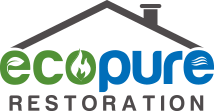When Should San Diego Homebuyers Seriously Consider a Mold Inspection?
Mold thrives in both indoor and outdoor environments. When you’re in the market for a home, it is important to know whether there is a full-blown contamination inside the house you are looking to buy. All those airborne mold spores can pose potential health risks, especially to those with mold allergies and weakened immune systems.
The U.S. Environmental Protection Agency’s (EPA) stand on the matter is that an inspection is not necessary if visible mold growth is present. Certain instances, however, make mold inspection absolutely necessary.
Old Homes with Poor Ventilation
If you are considering the purchase of an old home in San Diego, you need to watch out for moisture problems caused by poor under-roof ventilation. There is a high risk for mold growth in such a setting, and what’s worse is that it can be well hidden. Mold is commonly present beneath a drywall ceiling, in the attic insulation, or on the roof sheathing.
Don’t take your chances. Before you even think about making an offer, plan on hiring a professional, such as EcoPure Restoration, to inspect the property. If necessary, they can also carry out the appropriate mold remediation measures.
Water-Damaged Homes
Realtors are required to tell prospective buyers about a property’s inherent problems, especially in regards to water damage. It doesn’t matter if it’s a one-time flood, a sewer backup, a burst pipe, a leaky plumbing fixture, or any other type of water damage. You need to have that problem checked out by professionals.
Even if the house looks clean and well-kept, you can never be too sure, either. Mold might be lurking under the floorboards, under the carpets, in the insulation, on the walls, on the ceiling, or even in the smallest crevices in the house. Err on the side of caution and emulate smart homebuyers in San Diego for whom mold inspection is a must.
Consistently Damp Areas
Basements and crawl spaces are some of the most moisture-rich environments. Even if you are not a licensed inspector, you can notice any amount of peculiar dampness in the air. Damp environments do nothing but encourage mold growth, which then spreads throughout the rest of the house. If a prospective property has had a history of unmitigated moisture in these key areas, consider that a red flag for inspection.
Sources:
Mold Testing or Sampling, U.S. Environmental Protection Agency
A Home Buyer’s Guide to Mold Inspection & Testing, InspectAPedia
